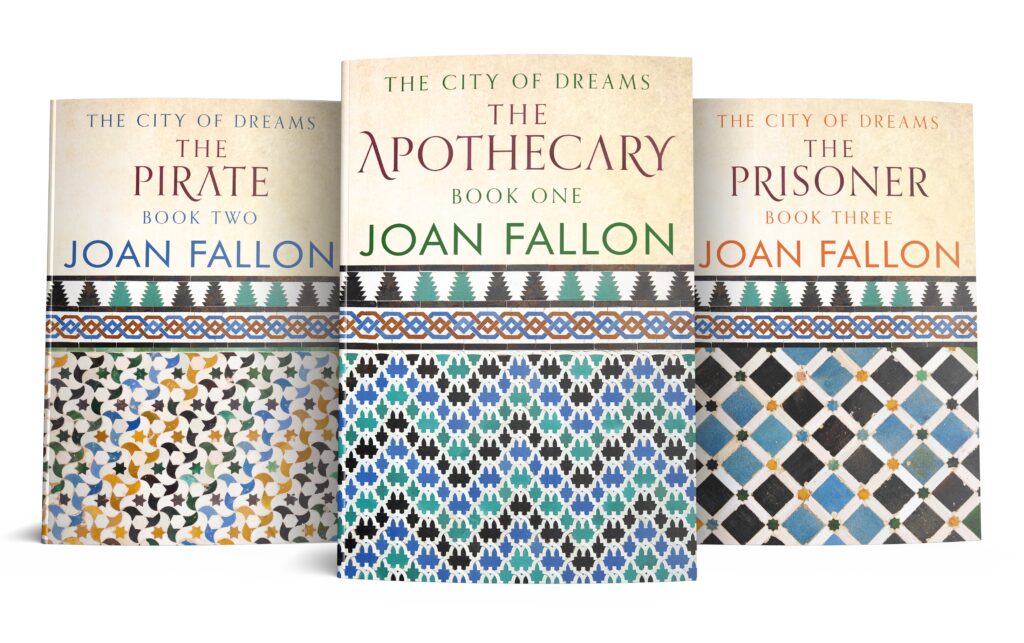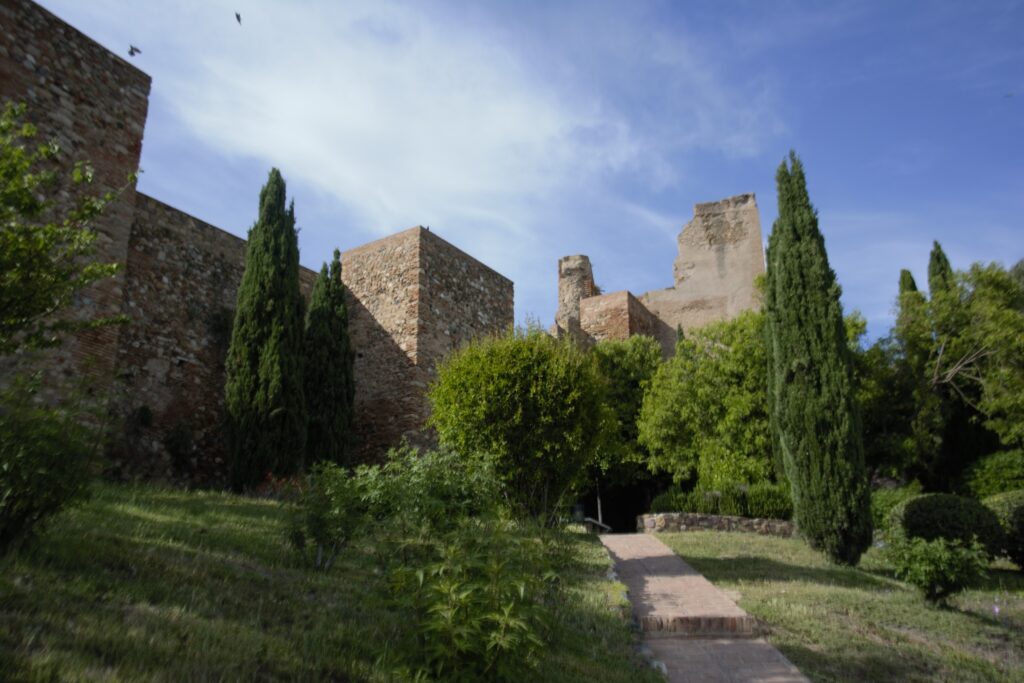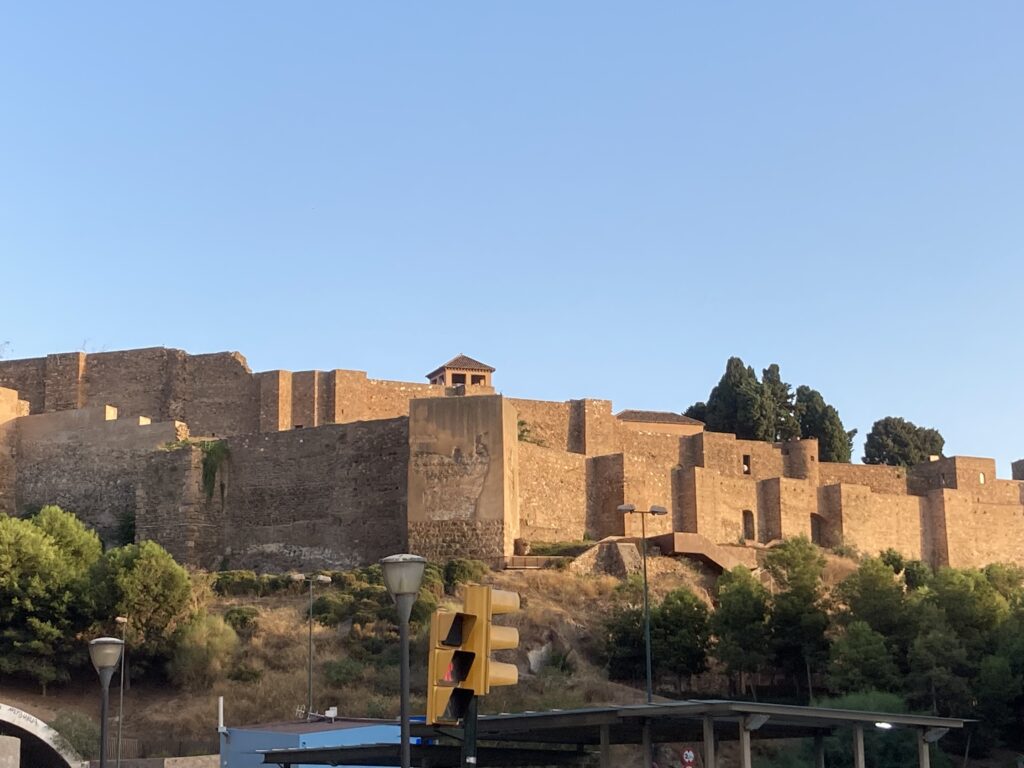
We all like looking around old castles and forts but do we ever stop to think what it would have been like to have lived in one of them? Let’s look at the alcazaba in Málaga, for example. Built on the side of the hill of Gibralfaro, overlooking a small bay in the Alboran Sea, it was in a strategic position from which to defend the city. Although the current building was built in the 11th century, the site had had strategic defensive importance for many centuries, having been occupied by the Phoenicians in the sixth century BC, and then by the Romans—as witnessed by the many Roman remains surrounding it. After the collapse of the powerful Omayyad dynasty which had maintained peace and prosperity in al-Andalus for more than a hundred years, the country began to disintegrate into a number of small independent states called taifas, and Málaga was one of them. The new Hammudid dynasty began its rule in a time of great instability and so the new caliph, Yahya I decided to build the alcazaba, a palace fortress designed to keep out their many enemies. Not only did the alcazaba have excellent natural defences, but the fort was constructed with a double wall. The outer wall had turrets and lookout posts over both land and sea, while the palace of the caliph and his court were located within the protection of the inner wall. Defence was always the main objective in its design, and not only was the alcazaba linked by a walled path to the fort of the Gibralfaro at the top of the hill, but any invading army who managed to get through the gate to the alcazaba would then have to pass through numerous fortified gates and pass down a maze of narrow and winding passage ways before they could reach the inner wall. No invading army would find it easy to enter the fortress without sustaining significant loss of men.
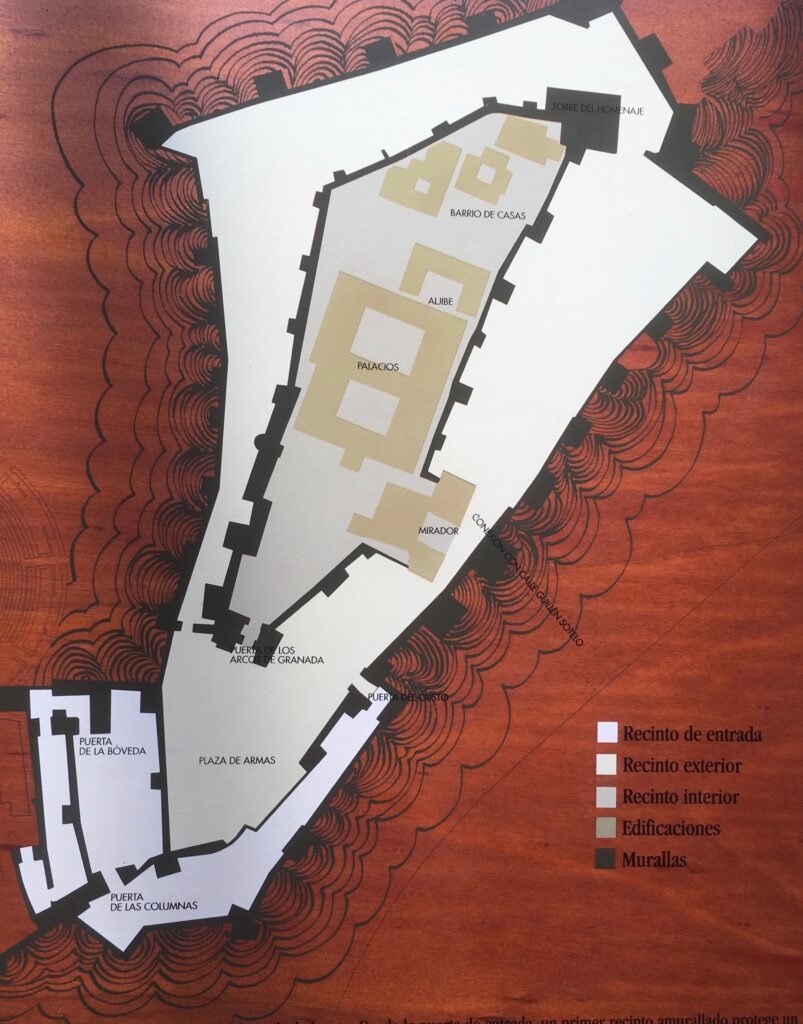
For the people who lived in Málaga in the 11th century, the alcazaba must have given them a feeling of security; it loomed over the walled city as a warning to invading pirates and armies alike. This was a time when Málaga began to regain its position as the important coastal city and trading port it had been in ancient times.
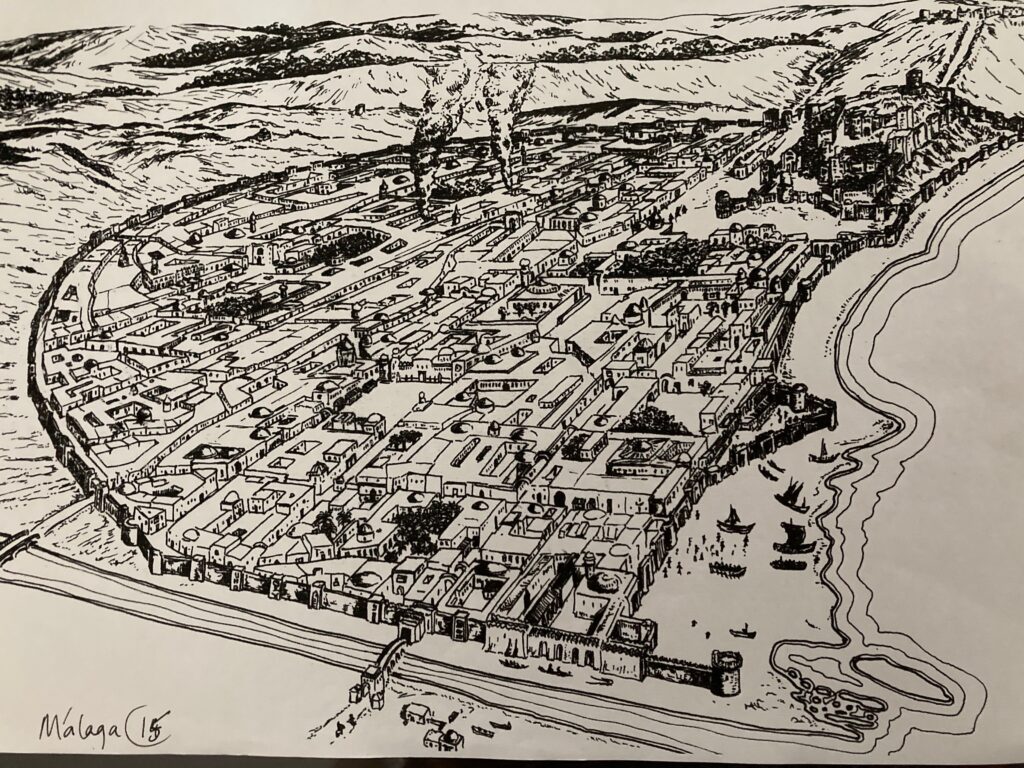
Moorish Málaga was not large by modern standards and you can still trace the outline of it from the remains of the city walls. To the west it was protected by the River Guadalmedina, to the south by the sea and to the north it did not extend beyond the city walls, remains of which you can find near today’s Calle Carreteria. As you might imagine, ship building was a thriving business, as was the import and export of goods, especially textiles such as silk and cotton. Other items produced and exported to other parts of the Mediterranean were pottery, ceramics, floor tiles and goods made from esparto grass, such as mats and baskets. The city was a bustling place; there were the salt beds—salt was a prized commodity in those times—the street markets selling spices, herbs and fruit, the slaughterhouse, the fish markets, the bakeries, the apothecaries—probably a hospital, although no remains have been discovered yet— barbers, soothsayers and wells of fresh water. And in the centre of Málaga was the mosque for the citizens—the royal family had their own mosque within the alcazaba. Outside the city walls there were market gardens, vineyards, olive groves, almond trees and fruit trees and the livestock, mainly goats and sheep. 11th century Málaga was self-sufficient and had plenty left over for trading.
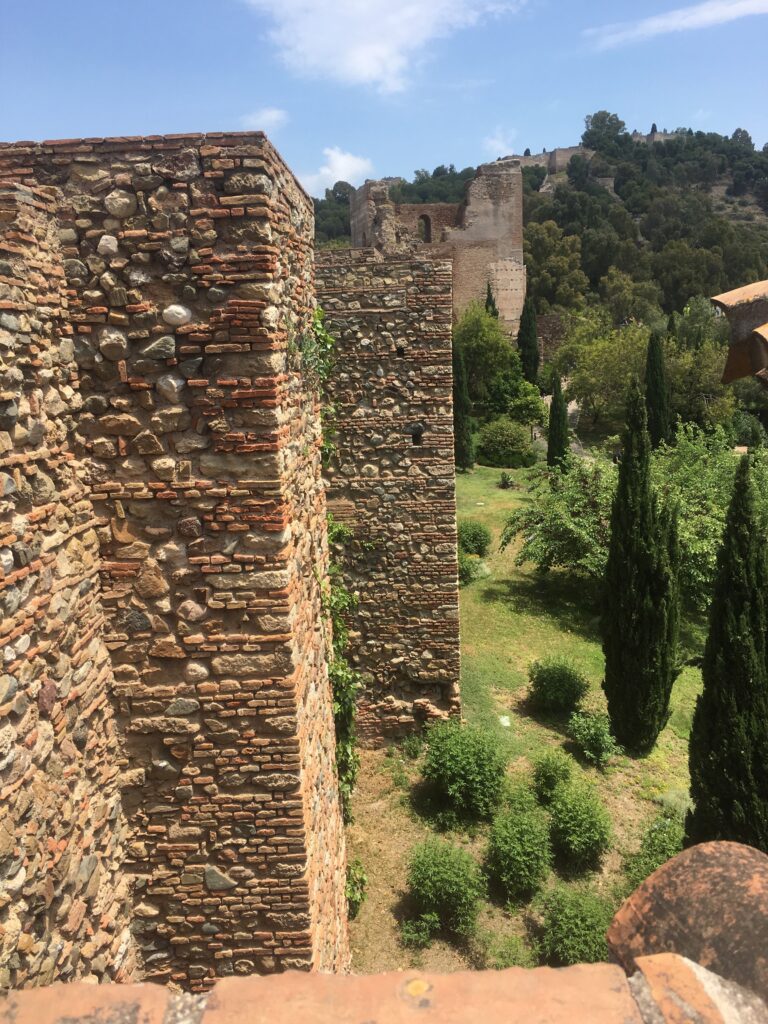
Cities change over the centuries as old buildings are demolished to create wider streets, more modern housing or new shopping precincts are built. Change is what drives progress, for better or ill. Because of this much of our past is buried under our feet and never likely to see the light of day. However one fortunate archeological discovery has been made recently in Málaga. An old cinema, Ciné Andalucia, has been demolished and is to be replaced by a modern new hotel. The builders had discovered some interesting remains in the foundations and called in the archeologists, who now believe that they have discovered a Moorish cemetery on the site. Its location is just outside the Puerta de Granada—one of the ancient city gates close to the Alcazaba. But a surprising question has arisen. Although the graves they excavated on the second level, dating from the 12th century, contained the remains of bodies clearly identified as Muslim from the way they were interred with their faces turned towards Mecca, the later graves, 250 of them, were all empty. These empty graves dated back to the 15th century, and were probably never used because in August 1487, the Christian army invaded Málaga. The theory is that after their defeat at the hands of the Christians, the Moors never had the opportunity to bury their dead in the customary Muslim manner. It will be interesting to know what else these excavations reveal about the past of Moorish Málaga, and what will eventually become of the hotel and the site’s ancient remains.

In my historical fiction series, The City of Dreams, you can get a clearer idea of what it was like to live in 11th Málaga from the main protagonist and his family. Historical fiction is a great way of transporting its readers back into the past, taking them down ancient streets, absorbing the smells and sounds of a way of life long disappeared. When Makoud, an apothecary, moves his family from the sleepy town of Ardales to Málaga in the 11th century he dreams of making a better life for them, but when he arrives in the city he realises that things are not as peaceful there as he had previously thought.
The City of Dreams trilogy is available in paperback, as an ebook and audiobook.
